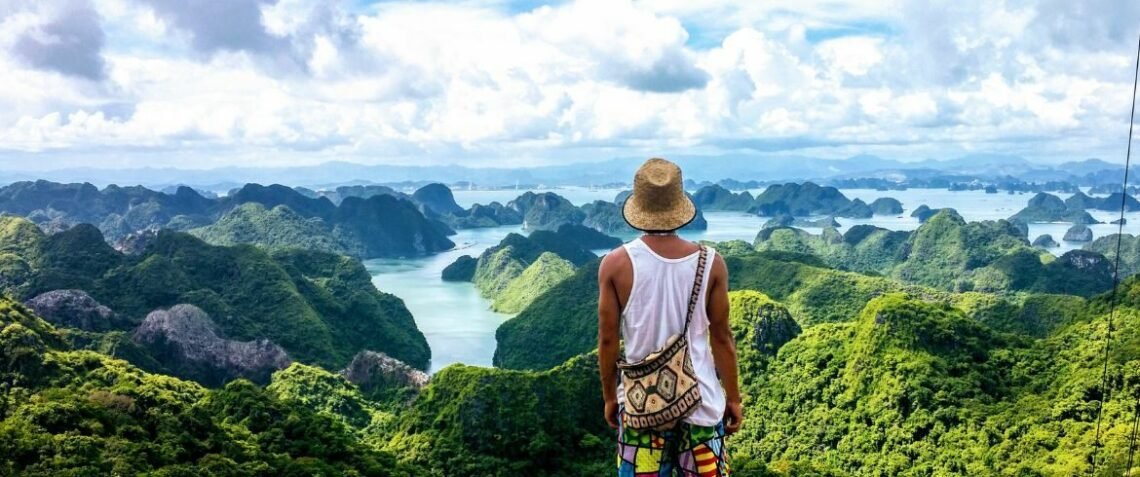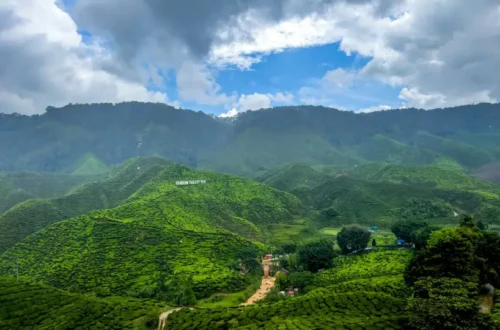Traveling can be a love letter to the planet or a burden on its fragile ecosystems. Eco-tourism, a movement rooted in sustainable exploration, invites us to wander thoughtfully, leaving only footprints and taking only memories. My first brush with eco-tourism came in Costa Rica, where I stayed in a rainforest lodge powered by solar panels, surrounded by howler monkeys and vibrant toucans. That experience shifted my perspective, showing me how travel can nurture both the soul and the environment. This article dives deep into eco-tourism, exploring its principles, benefits, and practical ways to embrace it, all while keeping your adventures vibrant and guilt-free.
What Is Eco-Tourism?
Eco-tourism is travel that prioritizes environmental preservation, supports local communities, and educates visitors about sustainability. It’s about immersing yourself in nature without harming it, whether hiking through Tanzania’s Serengeti or snorkeling in Belize’s coral reefs. Unlike mass tourism, which often strains resources, eco-tourism aims to protect ecosystems and cultures.
The Core Principles of Eco-Tourism
The International Ecotourism Society defines eco-tourism as “responsible travel to natural areas that conserves the environment, sustains local well-being, and involves interpretation and education.” These principles guide every eco-friendly trip, ensuring minimal impact and maximum benefit.
Environmental Conservation
Eco-tourism strives to protect natural habitats, from rainforests to wetlands. In Costa Rica, I saw lodges use rainwater harvesting to reduce water waste, a small but impactful step. Conservation-focused travel supports biodiversity and fights climate change.
Support for Local Communities
Eco-tourism channels tourism dollars into local economies, empowering communities. In Kenya’s Masai Mara, I met Maasai guides whose livelihoods depend on sustainable safaris. This approach preserves cultural heritage while providing jobs.
Education and Awareness
Eco-tourism educates travelers about ecosystems and local cultures. On a Galápagos tour, guides explained how invasive species threaten native wildlife, inspiring me to advocate for conservation. Knowledge gained on these trips fosters lifelong environmental stewardship.
Why Eco-Tourism Matters
Mass tourism often leaves scars—deforestation, pollution, and cultural erosion. Eco-tourism counters this by promoting sustainable practices that protect our planet for future generations. It’s a way to travel with purpose, not just pleasure.
Combating Climate Change
Tourism contributes 8% of global carbon emissions, but eco-tourism reduces this footprint. Eco-lodges using renewable energy, like the one I stayed at in Peru, cut emissions significantly. Choosing low-impact travel helps slow climate change.
Preserving Biodiversity
Eco-tourism protects endangered species and habitats. In Madagascar, I saw lemurs thrive in protected reserves funded by eco-tourism revenue. These efforts safeguard ecosystems under threat from logging and poaching.
Empowering Local Economies
By prioritizing local businesses, eco-tourism keeps money in communities. In Thailand, I bought handmade crafts from villagers, knowing my purchase supported their families. This economic boost reduces reliance on unsustainable industries.
Top Eco-Tourism Destinations
Eco-tourism thrives in destinations that balance adventure with conservation. Here are some of the world’s best spots to experience it.
Costa Rica
Costa Rica, a pioneer in eco-tourism, protects 25% of its land in national parks. My stay in a Monteverde eco-lodge, surrounded by cloud forests, was unforgettable. Visit Corcovado National Park for wildlife like sloths and jaguars.
Bhutan
Bhutan’s “high-value, low-impact” tourism model limits visitors to preserve its Himalayan landscapes. I learned about their carbon-negative policies from a guide in Paro. Trek the Jigme Singye Wangchuck National Park for a sustainable adventure.
Galápagos Islands
The Galápagos, Ecuador’s biodiversity hotspot, enforces strict eco-tourism rules. I snorkeled with sea lions, guided by conservationists who monitor visitor impact. Book with operators like Ecoventura for responsible tours.
New Zealand
New Zealand’s fjords and forests are eco-tourism havens. I hiked in Fiordland National Park, staying in low-impact huts. Choose operators certified by Qualmark for sustainable experiences.
Kenya
Kenya’s community-based conservancies, like those in the Masai Mara, blend wildlife protection with cultural preservation. I joined a safari led by Maasai rangers, a humbling experience. Look for camps certified by EcoTourism Kenya.
Comparison of Eco-Tourism Destinations
| Destination | Key Attraction | Best For | Sustainability Focus |
|---|---|---|---|
| Costa Rica | Cloud forests, wildlife | Adventure, biodiversity | Renewable energy, reforestation |
| Bhutan | Himalayan trails, monasteries | Cultural immersion | Carbon-negative policies |
| Galápagos Islands | Unique wildlife, marine ecosystems | Snorkeling, education | Strict visitor regulations |
| New Zealand | Fjords, Maori culture | Hiking, scenic beauty | Low-impact accommodations |
| Kenya | Safaris, Maasai culture | Wildlife, community support | Community conservancies |
Benefits and Challenges of Eco-Tourism
Eco-tourism offers profound benefits but isn’t without hurdles. Understanding both helps travelers make informed choices.
Benefits of Eco-Tourism
Eco-tourism transforms travel into a force for good, benefiting the planet and its people.
- Environmental Protection: Funds conservation projects, like reforestation in Costa Rica.
- Cultural Preservation: Supports traditions, as seen in Bhutan’s festivals.
- Economic Growth: Creates jobs, like guiding in Kenya’s conservancies.
- Personal Enrichment: Educates travelers, fostering a deeper connection to nature.
Challenges of Eco-Tourism
Even eco-tourism has pitfalls, which travelers must navigate carefully.
- Greenwashing: Some operators falsely claim sustainability. Research certifications like GSTC.
- Higher Costs: Eco-lodges can be pricier than conventional hotels.
- Limited Access: Remote locations, like Madagascar’s reserves, require extra travel effort.
- Overcrowding: Popular eco-destinations risk strain if not managed well.
Pros and Cons of Eco-Tourism
Pros:
- Supports conservation and local economies.
- Offers authentic, educational experiences.
- Reduces environmental impact compared to mass tourism.
Cons:
- Can be more expensive than traditional travel.
- Risk of greenwashing by unscrupulous operators.
- May involve longer travel times to remote areas.
How to Plan an Eco-Friendly Trip
Planning an eco-tourism adventure requires research and intention. Here’s how to do it right.
Choose Sustainable Operators
Look for tour companies with eco-certifications, like Rainforest Alliance or GSTC. In Peru, I booked with Inkaterra, whose lodges use solar power and fund conservation. Check reviews on platforms like TripAdvisor for authenticity.
Opt for Low-Impact Accommodations
Eco-lodges, like those in Costa Rica’s Arenal, use renewable energy and local materials. My stay in a bamboo cabin felt luxurious yet sustainable. Search for accommodations on sites like Eco Hotels.
Minimize Your Carbon Footprint
Choose trains or buses over flights when possible, and offset carbon emissions through programs like Carbonfund.org. I offset a flight to Ecuador, reducing my trip’s environmental impact. Pack light to lower fuel consumption.
Support Local Communities
Buy from local artisans and eat at community-run restaurants. In Thailand, I dined at a village eatery, savoring authentic curry while supporting locals. Look for community-based tourism initiatives online.
Best Tools for Eco-Tourism Planning
- Responsible Travel: Connects you with sustainable operators worldwide.
- Eco Companion: Curates eco-friendly tours and accommodations.
- Green Globe: Lists certified sustainable hotels and resorts.
- TripZero: Calculates and offsets your travel carbon footprint.
People Also Ask (PAA)
What is eco-tourism in simple words?
Eco-tourism is travel that protects the environment, supports local communities, and educates visitors. It focuses on sustainable practices, like staying in eco-lodges or joining conservation-focused tours.
Where can I find eco-tourism operators?
Websites like Responsible Travel, Eco Companion, and Green Globe list certified sustainable operators. Look for certifications from GSTC or Rainforest Alliance to ensure authenticity.
What are the best eco-tourism destinations?
Top spots include Costa Rica, Bhutan, the Galápagos, New Zealand, and Kenya. Each offers unique ecosystems and sustainable practices, from community safaris to carbon-negative policies.
How can I reduce my travel footprint?
Choose low-impact transport, stay in eco-lodges, offset emissions, and support local businesses. Tools like TripZero and Carbonfund.org help calculate and offset your carbon footprint.
FAQ Section
What makes a trip eco-friendly?
An eco-friendly trip minimizes environmental impact, supports local communities, and includes sustainable practices like staying in eco-lodges or using public transport.
How do I spot greenwashing in eco-tourism?
Check for certifications like GSTC or Rainforest Alliance, read reviews, and ask about specific sustainability practices. Avoid operators with vague or unverifiable claims.
Is eco-tourism more expensive?
It can be pricier due to sustainable practices and smaller-scale operations, but budget options exist. Compare prices on Eco Companion for affordable eco-lodges.
Where can I book eco-tourism trips?
Platforms like Responsible Travel, Eco Companion, and Intrepid Travel offer sustainable tours. Local operators, like Costa Rica’s Inkaterra, are also excellent choices.
Can eco-tourism really make a difference?
Yes, it funds conservation, supports local economies, and raises awareness. For example, eco-tourism in Rwanda has helped mountain gorilla populations recover.
Conclusion
Eco-tourism is more than a trend—it’s a way to explore the world while protecting it. My travels, from Costa Rica’s rainforests to Kenya’s savannas, taught me that sustainable travel enriches both the planet and the traveler. By choosing eco-friendly operators, supporting local communities, and minimizing your footprint, you can make every trip a step toward a healthier Earth. Start planning your sustainable adventure with resources like Responsible Travel or The International Ecotourism Society. Let’s travel with purpose and keep our planet thriving.





